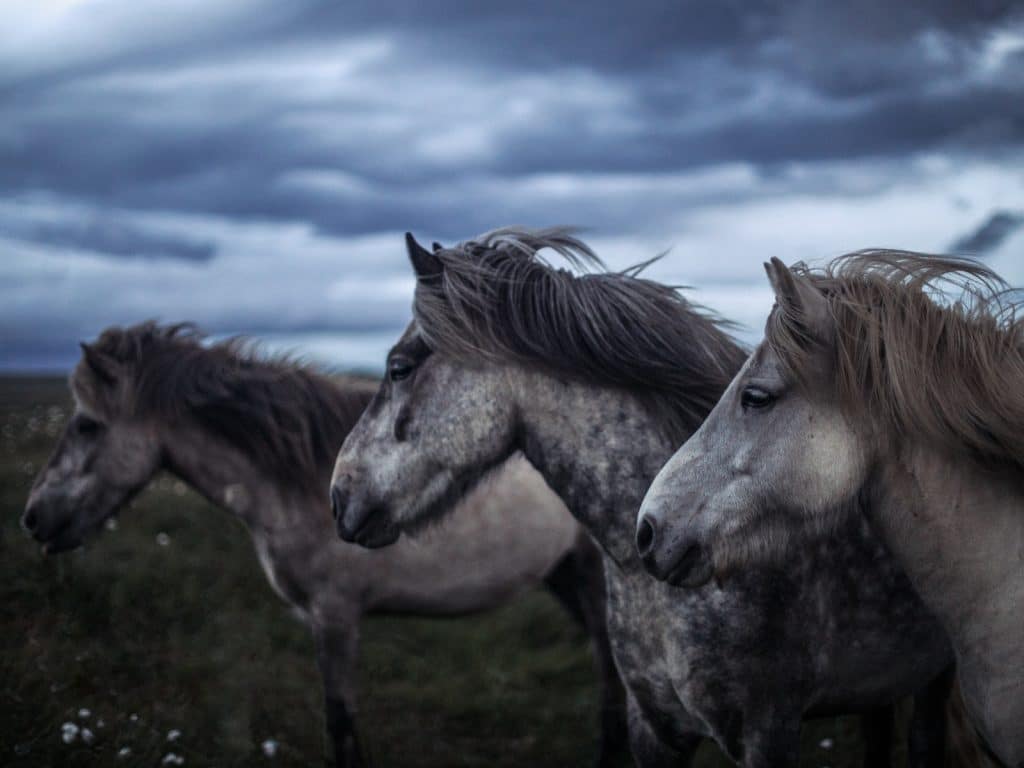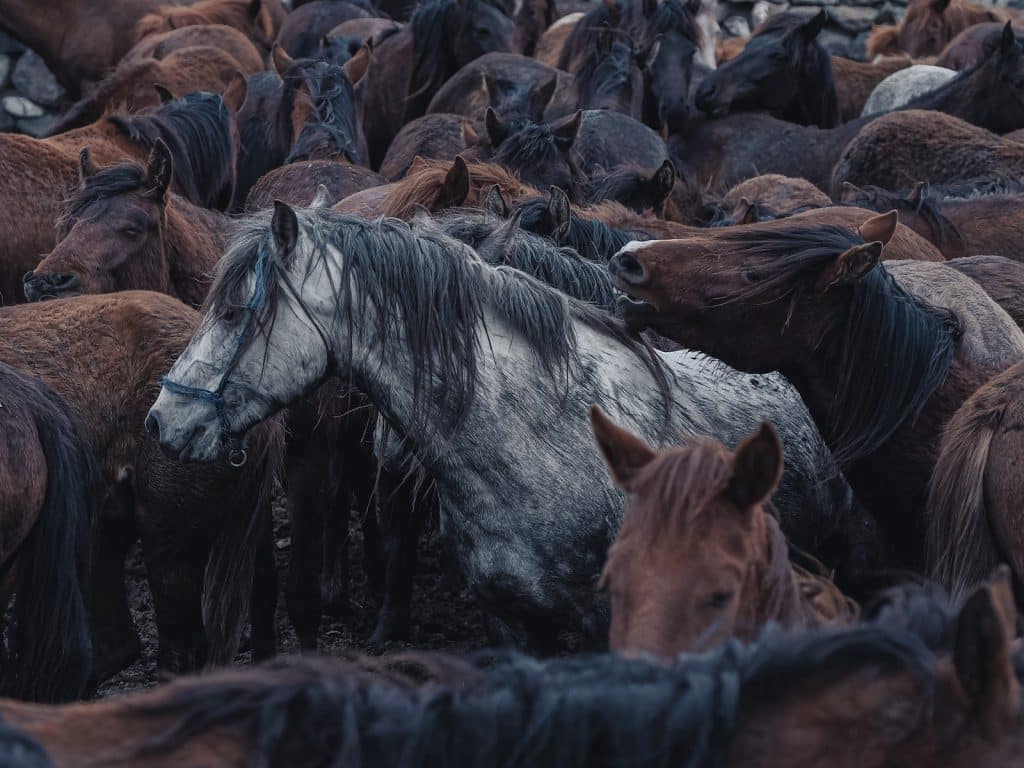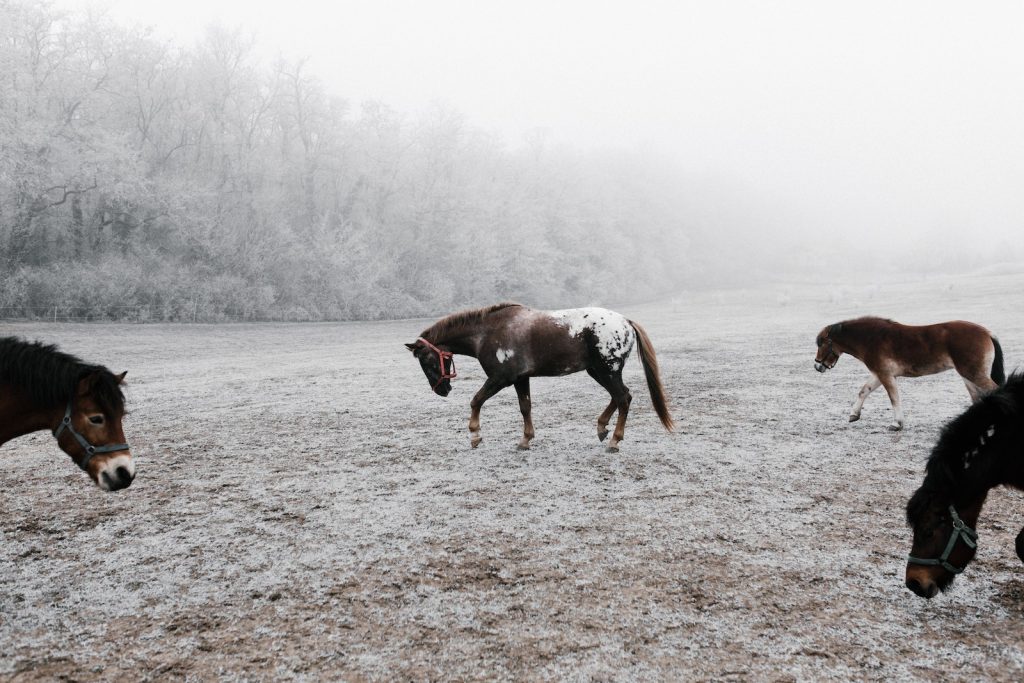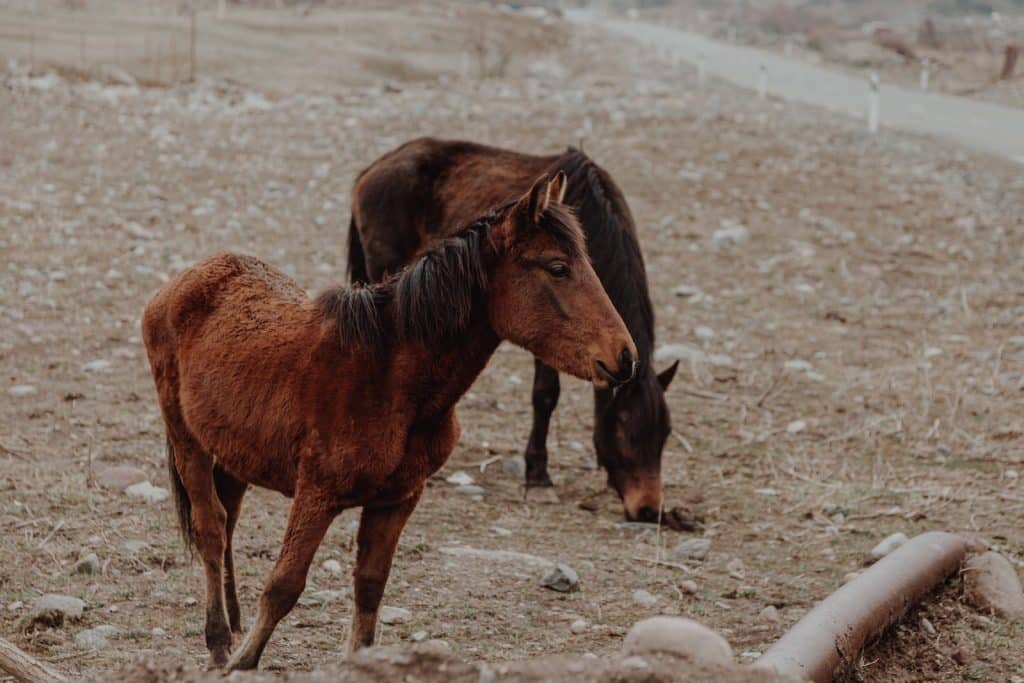
Rain rot is something that almost everyone has heard of if they have been around horses for a while. Rain rot is a common skin infection that can affect horses. However, it’s often confused with a fungal disease. The scabs around the affected area can be easily identified. Fortunately, this condition is fairly easy to treat. We’ll be covering a variety of topics about this infection. This includes how to prevent it from getting to your horses, and how to treat it if it does.
What is Rain Rot?
Rain rot is sometimes called rain scald, or streptothricosis. The organism dermatophilus consgolensis is responsible for this condition. This organism, often mistakenly thought to be a fungus is actually an actinomycete. It has characteristics of both bacteria and fungi.
Actinomycete causes scabs to form in infected areas. This can cause hair loss in small tufts. Your horse will be fine as the condition is not serious. You should take care not to rub the scabs with anything, like a saddle.
Your horse won’t feel any pain from the scabs. They haven’t been proven to cause itching, surprising! However, if the scabs are rubbed against, they can fall off leaving pink, pusty skin where the scab was.
What is Rain Rot?
Rain rot is caused by the dermatophilus congolensis, an actinomycete. However, it can cause problems under all circumstances. Rain rot is the name given to this infection. It needs a warm and moist environment in order to grow and thrive. The actinomycetes are found in horse skin but don’t usually affect horses until their skin is compromised.
It can happen in many ways. This can happen if your horse has been wet for a prolonged period of time. Excessive humidity, high temperatures, and insect bites are all things that can cause skin problems for horses.

Rain Rot in the Region
Rain rot is more prevalent in certain areas because it is dependent on the environment. Rain rot is rare in some areas, like the desert regions of the southwest United States. Rain rot is more common in humid areas that receive higher rainfall. This is true for places such as Florida, where the humidity is high and rainfall is frequent.
How to identify rainrot
Rain rot is characterized by the appearance of scabs when there is an infection. This is not the only way to determine if you have rain rot. Scabs can also be caused by other skin infections so the accuracy of your diagnosis may not be guaranteed.
Scabs aren’t as common in horses with longer winter coats than in those with shorter summer coats. You’ll notice smaller scabs and more often see matted tufts with raised hair. These are called paintbrush lesions. These lesions can grow rapidly and become larger, eventually leading to a large scab that is visible as pus from the dead and living skin layers.
A microscope can be used to examine the skin and determine if rain rot has occurred. You could also culture the bacteria. Although these methods are almost certain to give you an accurate diagnosis, it is best to have your vet do the procedure.

It Will Heal Naturally
Many people feel the instinct to try and see if a health problem resolves itself. Rain rot is not a healthy option. You’re better off stopping the infection in its tracks and acting immediately if you see it.
Some horses can be freed from this infection by natural means. It is caused by an organism living on the skin. Horses shed their winter coat to get rid of the organisms, but it doesn’t always happen.
Rain Rot: The Consequences
Rain rot should be treated immediately. Although some horses can treat it by shedding their winter coats, the infection can cause even more problems.
Rain rot requires a warm, humid environment in order to thrive. Rain rot can also thrive in these conditions, making secondary infections more common. Staph and strep are the most common secondary infections. These infections are more serious and harder to treat than rainrot.
Spreading the Infection
Rain rot spreads easily, which is one of its worst features. Rain rot is caused by an organism. If that organism is passed to another horse, it will cause rain rot. Multiple infections can be caused by sharing equipment among horses.
Rain rot can cause horse problems. You will need to make sure that other horses don’t come into contact with the horse’s equipment, such as saddles, pads, leg wraps, and brushes. After an infected horse has used equipment, it is recommended to thoroughly disinfect it.
Rain rot can be spread from horse to horse by insects. Insects can bite horses and then fly to another horse to spread the disease. Even if you try to avoid cross-contamination with other animals, they might still cause it.

Rain Rot Treatment
Rain rot is an organism that needs moisture and heat, but hates oxygen. It can’t reproduce or grow as well in high-oxygen environments. This information can be used to our advantage in trying to cure rain rot.
Horses need to be kept dry and clean. A moderate temperature is preferred. It should be adequately ventilated and protected from biting insects. The horse must be kept clear of other horses infected or uninfected.
Your first line of defense is antibacterial and antibiotic shampoos. Let the shampoo sit on your horse for at least 10-15 minutes to kill the infection. After shampooing your horse, dry it thoroughly. This process should be repeated daily for at most a week.
Also, you’ll need to clean the horse’s scabs. You’ll need to take your time and work gently as this can be very painful. It is easiest to first moisturize the scabs. After you are done, dry the horse thoroughly.
Rain rot can be treated with antibiotics in the most extreme cases. Sometimes, it may be necessary to administer immune-boosting medications simultaneously. Your veterinarian can help you better.
Conclusion
Horses can get rain rot. It is not painful or bothersome for horses and not life-threatening. Secondary bacterial infections are a possibility. This can cause serious health problems, such as strep and staph. Some horses can recover from the infection by shedding their winter hairs, but it is best to start treating the problem as soon as possible. Your horse will probably be cured by a simple antibacterial shampoo, although antibiotics may be required in severe cases.
What Is the best way to treat rain rot?
Topical antibacterial shampoos containing chlorhexidine, povidone-iodine, or benzoyl peroxide are used to treat horses. The horse should be lathered with shampoo, then washed after 10 minutes. Scabs that have come free should be carefully removed.
Is Betadine useful in preventing rain rot?
The most crucial part of treating rain rot is removing the crusty scablike lesions and exposing the affected skin to oxygen. This is normally accomplished by carefully removing the lesions with a brush or curry comb after soaking the afflicted region of skin with an antimicrobial shampoo
Can vinegar be sprayed on horses?
Flies buzzing, biting, and simply being flies are vexing animals. Flies and mosquitoes vie for the title of most vexing pest for horses. Vinegar is a fantastic homemade remedy for keeping your horses fly-free, from functioning as an area repellent to being sprayed directly on horses.
What kills horse fungus?
Soak any grooming items and washable tack that has come into touch with the infected horse in a 10% bleach solution. Soak for several hours before rinsing. A body washes with a prescription fungicide will also treat girth itch, which is caused by a fungal infection in the girth area.
Should your rug be a horse that has been scalded by rain?
To avoid future bouts of rain scald: Rug both afflicted and unaffected horses as a prophylactic measure. This will help protect your horse’s skin from both rain and bug attacks. A strong bug repellent should also be used in combination with the horse rug.
How long does rain rot take to heal?
The skin beneath will seem red and sore once the scabs and hair have fallen off. If the predisposing environmental variables are eliminated, the skin quickly re-epithelializes (heals), generally within seven to ten days, and new hair grows.
Is rain rot in horses’ self-resolving
A: True – If the rain rot causative factor in the horse’s environment is eliminated, the rain rot scabs will gradually dissolve; nevertheless, the red, raw, and itchy skin left behind puts the horse susceptible to subsequent infection with Staphylococcal folliculitis, a far more dangerous skin ailment.
How does betadine work on horses?
“Using weak Betadine or chlorhexidine, softly soak gauze, apply that immediately on the wound, and then bandage correctly. At the bandage change, damp gauze is used to debride the wound, which is then carefully cleaned to eliminate any moisture or discharge. After that, the tissue seems clean and ready for a new bandage application.
Can human betadine be used on horses beyond?
You did nothing incorrect when you cleaned up your horse’s wound with a dilute betadine (povidone-iodine) solution. This is a cleaning product that is widely utilized in both the human and veterinary worlds. This substance is especially useful for cleaning wounds on the face because it will not hurt the eyes if it mistakenly gets in them.
When should a horse be administered betadine?
Use full-strength Betadine Solution for Preoperative skin and mucous membrane preparation. Defending against bacterial illness. Minor lacerations, abrasions, and burns require immediate antisepsis.